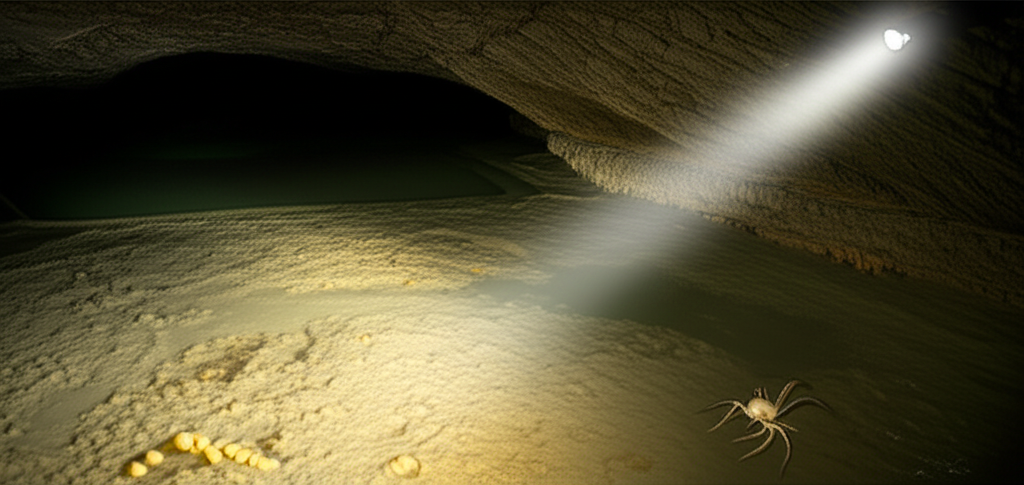Romania's Movile Cave: An Alien Ecosystem Sealed for 5.5 Million Years
Deep beneath Romania, Movile Cave harbors an ecosystem sealed from the surface for 5.5 million years. In total darkness and a toxic atmosphere, life here is powered not by sunlight but by chemosynthesis, supporting a food web of over 50 unique species.

A World Unseen
In 1986, workers in southeastern Romania were surveying for a suitable location to build a power plant when they broke through to the unimaginable: a subterranean world completely sealed off from the surface. This was no ordinary cavern. This was Movile Cave, an ecosystem that had been isolated for an estimated 5.5 million years, preserving a time capsule of life that evolved in absolute darkness and a toxic atmosphere.
An Alien Atmosphere on Earth
To enter Movile Cave is to step onto another planet. After a series of vertical shafts and narrow limestone tunnels, researchers are met with an environment hostile to most surface life. The air is thick, with oxygen levels at a third to a half of what we're used to, but it's rich in carbon dioxide and hydrogen sulfide, the latter giving it the signature smell of rotten eggs. It's a question that naturally comes to mind, as one online commenter wondered:
How do they even breathe down there? Wouldn't the air be toxic? It's crazy that anything bigger than a microbe could survive.
The answer lies at the very foundation of this ecosystem. While life on the surface is overwhelmingly powered by photosynthesis—using sunlight to create energy—life in Movile Cave is powered by chemosynthesis. The cave's warmth and the hydrogen sulfide-rich thermal waters bubbling up from deep below ground provide the perfect fuel for vast mats of chemoautotrophic bacteria. These microbes oxidize sulfides and methane to produce energy, forming the base of a complex and unique food web, all without a single ray of sunlight.
The Pale Inhabitants of the Dark
This microbial buffet supports a surprising diversity of life. Scientists have identified over 50 invertebrate species in the cave, with more than 30 being endemic, meaning they are found nowhere else on Earth. Having evolved in perpetual darkness, most have lost their sight and skin pigmentation. The cave is home to eyeless spiders, ghostly white woodlice, translucent water scorpions, and a unique species of leech that preys on cave worms rather than blood. Each creature is a testament to evolution's ability to adapt to the most extreme conditions, a living gallery of evolutionary divergence.
A Window into Other Worlds
The discovery of Movile Cave was more than just a biological curiosity; it was a profound scientific revelation. It proved that complex, multi-cellular life could thrive in environments previously thought uninhabitable. The feeling of wonder it inspires is palpable, as captured by a commenter online:
I think this is one of the most incredible things I've ever heard of. To think that an entire ecosystem, completely cut off from our world, developed and thrived on its own... it's like finding life on another planet, but it's right here under our feet.
This sentiment is shared by the scientific community. Movile Cave serves as a natural laboratory for astrobiologists searching for life on other planets. If life can flourish in a dark, sulfurous environment on Earth, it raises the possibility that similar ecosystems could exist in the subterranean oceans of moons like Europa or Enceladus. It is a powerful reminder that life is tenacious, adaptable, and can be found in the most unexpected of places, patiently waiting in the dark to be discovered.
Sources

 in
in